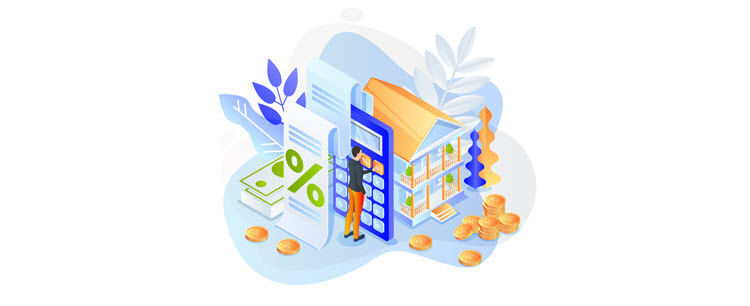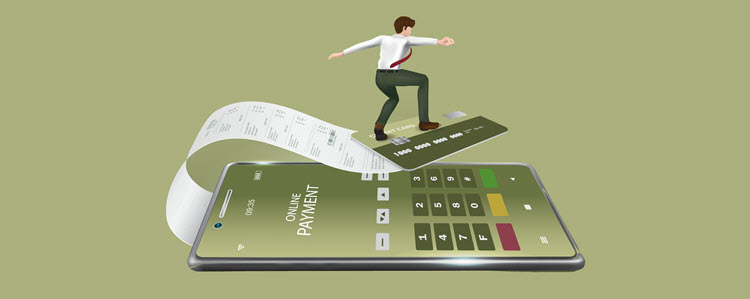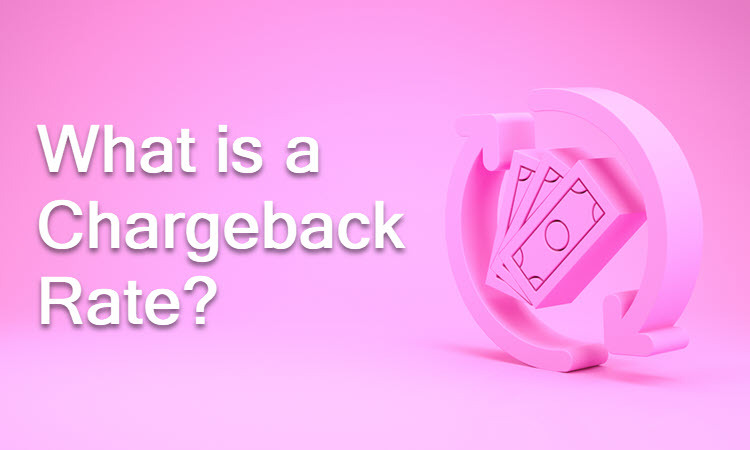When customers aren’t happy with purchased goods or services, they either request a chargeback or a refund.
Chargebacks are official complaints filed by consumers against merchants. They occur when a customer reports an unauthorized withdrawal from their bank account. As such, they are more complicated, since they include the consumer, the merchant, and the bank that issued the relevant payment card.
Chargebacks can also be detrimental to a merchant’s ability to process payments. The number of chargebacks against a merchant determines the merchant’s specific chargeback rate.
This article explains what a chargeback rate is, how it’s calculated, and how a high chargeback rate affects a merchant’s business.
What Is Chargeback Rate?
A chargeback rate is the ratio between the number of chargebacks filed against a merchant within one month, divided by the total number of payments made to the merchant’s business account during the same period.
Card associations and banks track each merchant’s chargeback rate to identify high-risk merchants as well as potentially fraudulent activity.
Merchants that receive a lot of chargebacks undergo special supervision by banks and credit card associations. Such businesses are often labeled as high-risk merchants, which means that they need to open a high-risk merchant account to be able to process payments. High-risk accounts usually involve higher costs and fees than regular merchant accounts.
Also, payment processors may charge higher processing fees for handling the transactions of high-risk merchants.
How to Calculate a Chargeback Rate?

The simplest way to calculate a chargeback rate is to divide the number of chargebacks filed against your business in the current month with the total number of payments made to your merchant account during the same period.
What Is a Normal Chargeback Rate?
For a long time, anything under 1% was considered a normal chargeback rate. However, there have been some changes in the methodology of the chargeback rate calculation used by Visa and Mastercard.
Currently, Visa is particularly careful with merchants whose chargeback rate is 0.9%, while the initial supervision program starts at a chargeback rate as low as 0.65%.
Mastercard retains the traditional chargeback rate threshold of 1%.
A detailed overview of Visa and Mastercard chargeback rate thresholds is provided below.
How Do Card Networks Calculate the Chargeback Rate?

The two leading card networks, Mastercard and Visa, calculate chargeback rates slightly differently.
To calculate a merchant’s chargeback rate, Mastercard divides the number of chargebacks from the previous month with the number of payments made to the merchant’s account at the end of the current month.
On the other hand, Visa divides the number of chargebacks with the total number of payments made to the merchant’s account within the same month.
What if the Chargeback Rate Is too High?
Card issuing associations require that the acquiring bank monitors each merchant’s chargeback rate regularly.
Merchants with high chargeback rates are subject to special monitoring programs. Once in a monitoring program, merchants need to stay below the set chargeback rate for three months in a row to have the special monitoring lifted from their merchant account.
If a merchant doesn’t manage to lower the chargeback rate during the probationary period, their acquiring bank may close their merchant account . Without an account, the merchant can’t receive payments and run regular business operations.
Note: CCBill provides an advanced fraud scrubbing system to all of its merchants. The system applies hundreds of checks on each transaction before the data is sent to banks and credit card associations. CCBill’s fraud protection system minimizes your exposure to fraud and chargebacks.
Visa
Visa uses the following chargeback ratios to categorize its merchants:
- Early Warning Level. Merchants with 75-100 chargebacks in one month, and a chargeback ratio of 0.65% and above.
- Standard Level. Merchants with 100 and more chargebacks within one month and a chargeback ratio of 0.9% and above.
- Excessive Level. Merchants with 100 and more chargebacks within one month and a chargeback ratio of 1.8% and above.
At the Early Warning Level, Visa asks the acquiring bank and the merchant to investigate the reasons for the increased number of chargebacks and reduce them.
Visa gives four months to Standard Level merchants to reduce the number of chargebacks. If the chargeback ratio doesn’t go down, the enforcement period begins. This lasts eight months. During the first three months, merchants need to pay a $50-fee for every new chargeback. In the remaining five months, the fee is $100 per chargeback. At the end of the enforcement period, the merchant also has to pay a $25,000 review fee.
Merchants belonging to the Excessive Level undergo an eight-month enforcement period, but they pay a $100-fee per chargeback during all eight months. They also pay a $25,000 fee after the first four months.
A merchant exits these programs if they keep chargebacks below the Standard threshold for three consecutive months.
Mastercard
Mastercard tracks the number of chargebacks filed against a merchant and divides it by the total number of transactions that a merchant received the previous month.
Mastercard doesn’t have a chargeback limit. Currently, merchants working with this card association need to keep the chargeback ratio below 1% and receive less than 100 chargeback disputes per month in order to avoid additional monitoring.
Merchants that exceed the thresholds fall into the following categories:
- Chargeback Monitored Merchant Program. Supervision of merchants that exceed 100 chargebacks per month and a chargeback ratio of 1.5% within one month.
- Excessive Chargeback Merchant Program. Intensive monitoring for merchants that have 100-299 chargebacks per month and a chargeback ratio of 1.5%-2.99% for two months in a row.
- High Excessive Chargeback Merchant Program. Special measures for merchants that exceed 300 chargebacks and have a 3% chargeback ratio of 3% for two months in a row.
Merchants falling into the latter two categories pay higher fees for accepting credit card payments and penalties for every month spent under special monitoring. Mastercard requires that a merchant stay below the relevant chargeback limit for three months in a row to be labeled fully compliant again.
How Transaction Volume Affects the Chargeback Rate

Merchants with a lower transaction volume are more likely to get away with a chargeback rate above 1%. For instance, if a business has had 150 transactions this month and 2 chargebacks, the chargeback rate is 1.33%. However, this business most probably won’t be qualified as a high-risk merchant.
On the other hand, if you’ve had 750 transactions and 8 chargebacks, the chargeback rate is 1.33%, but the fact that you have received 8 chargebacks attracts more scrutiny.
How to Prevent a High Chargeback Rate?
Preventing a high chargeback rate means reducing the number of chargebacks filed against your business.
Chargeback-preventing techniques are categorized into strategies that prevent chargebacks resulting from fraud and those that prevent chargebacks from non-fraudulent activities.
Anti-Fraud Chargeback Preventing Strategies
Here’s what merchants can do to prevent fraud and reduce the chargeback rate.
- Require a buyer’s login at the checkout. It will help you track buyers and their payments more easily.
- Implement an address verification system (AVS) to ensure that the buyer’s billing address is the same as their credit card account address. This will reduce the false-identity fraud cases.
- Fortify payment security at the checkout by asking buyers to enter their card identification number (CID) and card verification value (CVV).
Note: Reliable payment processors use cutting-edge payment authentication methods and secure online payment forms to keep merchants safe from chargebacks so bear this in mind when choosing your payment processor.
Non-Fraudulent Chargeback Preventing Strategies
- Offer great products and services. If your customers are satisfied with their purchase you will reduce the number of chargebacks and keep your chargeback rate down.
- Provide 24/7 customer support and bring in a consumer-friendly refund policy. Contact the consumer the moment you realize they’re not happy with your product or service and handle the issue on the spot. The more refund requests are sorted out to the consumers’ satisfaction, the lower the chargeback rate.
- Inspect the product catalog if you notice that one or more products repeatedly appears in chargeback requests. Remove or improve the catalog offer.
- Make your business name clear enough so that consumers always recognize it in their bank statements and don’t dispute purchases made from you.
- Hire a reliable and experienced payment processor that knows how to prevent chargebacks and handle such outcomes as they occur.
- Ensure a reliable delivery service that cares about the products they distribute.
Note: If you win a dispute, you may get back part of the disputed money. However, the chargeback in question still counts in your chargeback ratio.
Conclusion
Merchants that don’t put their chargeback rate under control face going through a strict supervision program and paying higher fees on chargebacks. Eventually, their merchant account could be suspended so they won’t be able to accept payments and carry out everyday business activities.
The tips and explanations presented above will help merchants avoid chargebacks and keep the chargeback rate low.
